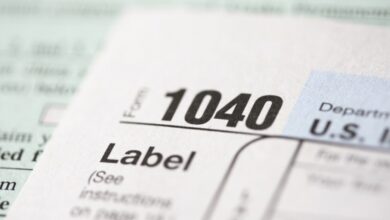

After erupting for the first time in nearly 40 years, lava flows from Hawaii's Mauna Loa volcano now "appear to be inactive," the U.S. Geological Survey said Monday.The eruption began Nov. 27, drawing spectators to the world's largest active volcano to marvel at its fountains of glowing lava, which at times shot 200 feet into the air and threatened to cover a major highway on Hawaii's Big Island.Now, experts at the geological survey say "only residual incandescence and no lava movement" were seen at the vent site as of Monday morning."The channels below the vent appear drained of lava and no longer feed the main flow front," the USGS said in a Monday update. "Satellite imagery shows the entire 2022 flow field cooling and no longer active."The lava has stalled about 1.7 miles from Daniel K. Inouye Highway, known locally as Saddle Road, which is the shortest route linking the east and west sides of Big Island, the update said."The inactive main flow front still glows at a few spots at night and may inch northward very slowly as it continues to settle," the survey said Monday.Eruption activity had been slowing over the past several days, and USGS experts said Saturday the latest behavior indicated eruptions would soon end altogether.David Phillips, deputy scientist-in-charge of the USGS Hawaiian Volcano Observatory, said over the weekend the lava flow that was threatening the highway was no longer active."That being said, it was a very large flow, it's a large volume of lava which is sitting there. It's still very hot inside, it will take some time to cool," Phillips said.In light of the slowed activity, the volcano alert level was lowered from a warning to a watch, the volcano observatory said over the weekend."The significance of the continuing inflation while the flow field is inactive is not yet clear; it is common for eruptions to wax and wane or pause completely, but none of the eight recorded eruptions from Mauna Loa's Northeast Rift Zone returned to high eruption rates after those rates decreased significantly," the geological survey said.Mauna Loa's latest eruption came as its sister volcano -- Kilauea -- has also been erupting since last year. Kilauea's lava, though, is confined to a small pond near the top and not gushing down the side.The volcanoes' simultaneous activity created a rare dual-eruption event on the Big Island that drew many visitors to Hawai'i Volcanoes National Park.
After erupting for the first time in nearly 40 years, lava flows from Hawaii's Mauna Loa volcano now "appear to be inactive," the U.S. Geological Survey said Monday.
The eruption began Nov. 27, drawing spectators to the world's largest active volcano to marvel at its fountains of glowing lava, which at times shot 200 feet into the air and threatened to cover a major highway on Hawaii's Big Island.
Now, experts at the geological survey say "only residual incandescence and no lava movement" were seen at the vent site as of Monday morning.
"The channels below the vent appear drained of lava and no longer feed the main flow front," the USGS said in a Monday update. "Satellite imagery shows the entire 2022 flow field cooling and no longer active."
The lava has stalled about 1.7 miles from Daniel K. Inouye Highway, known locally as Saddle Road, which is the shortest route linking the east and west sides of Big Island, the update said.
"The inactive main flow front still glows at a few spots at night and may inch northward very slowly as it continues to settle," the survey said Monday.
Eruption activity had been slowing over the past several days, and USGS experts said Saturday the latest behavior indicated eruptions would soon end altogether.
David Phillips, deputy scientist-in-charge of the USGS Hawaiian Volcano Observatory, said over the weekend the lava flow that was threatening the highway was no longer active.
"That being said, it was a very large flow, it's a large volume of lava which is sitting there. It's still very hot inside, it will take some time to cool," Phillips said.
In light of the slowed activity, the volcano alert level was lowered from a warning to a watch, the volcano observatory said over the weekend.
"The significance of the continuing inflation while the flow field is inactive is not yet clear; it is common for eruptions to wax and wane or pause completely, but none of the eight recorded eruptions from Mauna Loa's Northeast Rift Zone returned to high eruption rates after those rates decreased significantly," the geological survey said.
Mauna Loa's latest eruption came as its sister volcano -- Kilauea -- has also been erupting since last year. Kilauea's lava, though, is confined to a small pond near the top and not gushing down the side.
The volcanoes' simultaneous activity created a rare dual-eruption event on the Big Island that drew many visitors to Hawai'i Volcanoes National Park.
Source link







